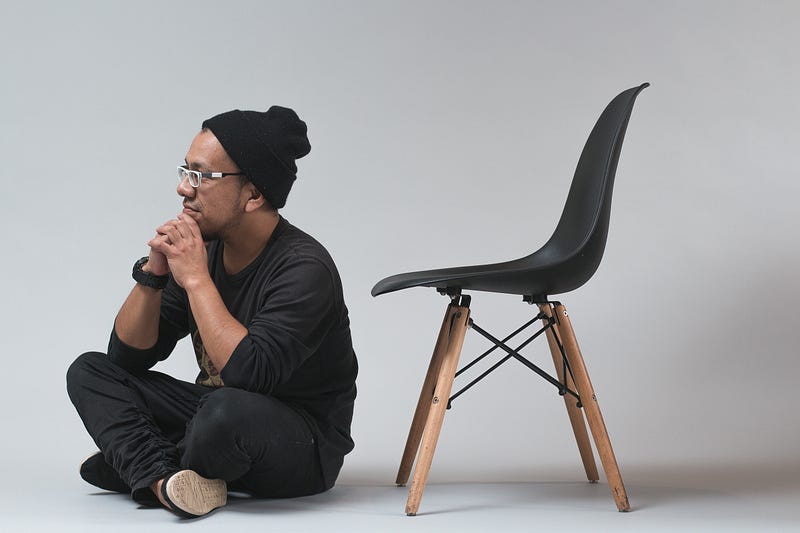# Unleashing Your Creative Potential with PEACE™ Practice
Written on
Chapter 1: Understanding PEACE™
Are you a creative thinker, strategist, or someone engaged in a competitive field? Embrace the PEACE™ practice to gain an edge.

The PEACE™ method stands for Productive & Entertaining Activities Cessation Enforcement. While it can be likened to meditation, it has unique characteristics that set it apart. In this article, I will delve into how PEACE™ differs from traditional meditation, its benefits, the steps to practice it, and why many people shy away from it. Though it may seem accessible, mastering it poses a significant challenge. However, achieving this mastery grants you a distinct competitive advantage.
How to Practice PEACE™
To begin your PEACE™ practice, carve out a time when you won't be interrupted and have no obligations. Silence your phone, turn off the TV, and mute any potential distractions. Set a timer to ensure you can relax without worrying about when to stop.
While the goal is to refrain from productive and entertaining activities, you may allow yourself a few minor actions, such as:
- Scratching an itch
- Changing your posture
- Stretching
- Observing your surroundings
- Walking back and forth (for extended sessions)
It's crucial to note the allowance of these actions; they should arise naturally, not out of a desire to be productive or entertained. Find a comfortable position—whether sitting, standing, or lying down (avoid lying down if you feel sleepy).
Initially, you'll likely feel a pull toward action, like scrolling through social media. However, resist this urge.
The real challenge lies in managing your thoughts. You'll notice your mind racing, but your task is to redirect your focus away from these thoughts and back to your immediate environment—such as a physical sensation, a sound, or something you see.
Remember, the aim is not to eliminate thoughts entirely. You will still experience mental activity, but it should be passive, not directed. Most importantly, ensure that your thoughts don't gain enough momentum to become productive or entertaining.
Why Choose PEACE™ Over Traditional Meditation?
PEACE™ is not meant to replace traditional meditation. I highly recommend incorporating both practices into your routine. However, PEACE™ is often more approachable than traditional mindfulness meditation, making it easier to sustain for longer periods.
The human body thrives on movement, which is why sitting still can be uncomfortable. This discomfort can create resistance in conventional meditation practices. In contrast, PEACE™ can be practiced for hours, allowing for deeper exploration of your mind.
Benefits of the PEACE™ Practice
The advantages of PEACE™ are akin to those gained from mindfulness meditation: enhanced calmness, clarity, and creativity. This isn't some mystical experience; it's a genuine mental break—one that allows your mind to reset without the distractions of social media, television, or idle chatter.
When you create space by stepping back from constant mental engagement, solutions will emerge. It’s as if, by halting your questioning, you invite answers to surface. You’ll discover solutions to your most pressing challenges as your mind intuitively prioritizes your thoughts.
As you practice PEACE™, you may also experience a profound sense of presence. Life's seriousness can begin to feel absurd, prompting moments of laughter and joy. You'll find yourself more authentic and confident in social interactions, no longer trapped in a façade but rather being your true self.
For those familiar with trauma and emotional intelligence, you may notice that unresolved issues begin to dissipate as you become aware of unhelpful thought patterns. Generally, you'll find that things start to align, which can save you valuable time in your personal and professional life.
Additional Insights on PEACE™
Another layer of benefits comes from recognizing how you typically spend your downtime. Instead of getting sucked into social media or binge-watching shows, practicing PEACE™ can provide a more meaningful way to utilize your time. Even as a creative, you may find that amidst your attempts at productivity, you often end up going in circles without yielding valuable outcomes.
When is the Best Time for PEACE™?
I personally engage in PEACE™ after my gym sessions. At that point, my mind is too fatigued for productive work, making it the ideal moment to practice. If I encounter writer’s block—essentially a cognitive stall—PEACE™ helps me regain clarity.
Although I aspire to be as productive as others, I’ve learned that forcing creativity often leads to lower quality output.
The Unfair Advantage of PEACE™
PEACE™ provides an advantage because most individuals won’t undertake this practice. Those who do, however, operate on a different mental level.
So, why do people shy away from PEACE™? There are two main reasons.
Reason #1:
People can be irritating, but our biggest annoyance is often ourselves. To distract from this inner turmoil, many turn to entertainment, preferring to watch something on TV rather than confront their own thoughts.
Reason #2:
Life can feel overwhelming, and we often feel pressured to fill every moment with productivity or joy. The idea of doing nothing can be hard to accept.
The Irony of PEACE™
Ironically, PEACE™ is quite productive. Watching your life resolve itself when you stop trying to control everything can be entertaining in its own right. While it’s not a panacea, it allows you to implement the solutions that become clear during your practice, saving you time and frustration in the process.